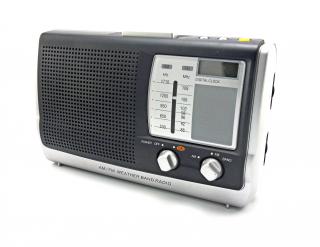
Padlet boasts that their platform is “the easiest way to create and collaborate in the world”. A rather presumptuous statement if you think about it.
For that reason we decided to test it for ourselves and you can also let us know if their statement is accurate or just too optimistic. Can Padlet be used on an academic level or even within other areas within the university? Have a look at our own Bits & Bytes Padlet-page and leave us a message. (You can do this anonymously or leave your name)
But first – what is Padlet?
This seemingly simple platform gives educators, for example lecturers and teachers and learners or students a virtual bulletin board on which they can air their opinions and thoughts on a topic to their heart’s content. It almost works like a traditional board, but with much more functionality. For example, a lecturer can ask a question in class, paste it on a wall and students can comment and collaborate on it during class. You can even load graphics, files, as well as links.
Padlet does have a few handy options to customise your wall just the way you prefer it. Whether you want to change the background or assign specific rights to a particular person. You can even get a QR-code for your site/wall and Padlet is extremely smart phone and tablet friendly.
If you’re interested in what Padlet can be used for, also read Shaun Takenouchi’s article.
Padlet provides educators and learners a virtual platform on which to collaborate on a specific topic.
Padlet is a virtual wall that allows people to express their thoughts on a common topic easily. It works like an online sheet of paper where people can put any …
https://padlet.com/
Welcome to Padlet, possibly the easiest way to create and collaborate in the world.
https://www.youtube.com/watch?v=UuzciL8qCYM
http://web.appstorm.net/reviews/media-reviews/padlet-a-blank-slate-on-the-web-to-collaborate-with-others/
In a nutshell, Padlet is an online bulletin board. History teachers, however, can use this tool in myriad ways. For example, Padlet users can pose open-ended questions and elicit multiple student responses—ideal for posing document-based questions using primary sources.
http://teachinghistory.org/digital-classroom/tech-for-teachers/24636
![]() As the need for a richer educational experience increases, so does the demand for software and apps encouraging and facilitating better and more interaction and collaboration between students and their educators.
As the need for a richer educational experience increases, so does the demand for software and apps encouraging and facilitating better and more interaction and collaboration between students and their educators.


 Abstrahere Academic focuses on academic environments, and assists master’s and PhD students to improve and apply their critical reading skills – an important part of their thesis writing. Open and healthy communication between student and academic supervisor about critical text analysis is an integral part of the reading and writing process.
Abstrahere Academic focuses on academic environments, and assists master’s and PhD students to improve and apply their critical reading skills – an important part of their thesis writing. Open and healthy communication between student and academic supervisor about critical text analysis is an integral part of the reading and writing process.
 This September Bits & Bytes celebrated one year on air. Initially Bits & Bytes started out as a newsletter to staff, but over time we realised we have too many interesting things to share, we just can’t keep it to ourselves anymore. But what more could we do?
This September Bits & Bytes celebrated one year on air. Initially Bits & Bytes started out as a newsletter to staff, but over time we realised we have too many interesting things to share, we just can’t keep it to ourselves anymore. But what more could we do?